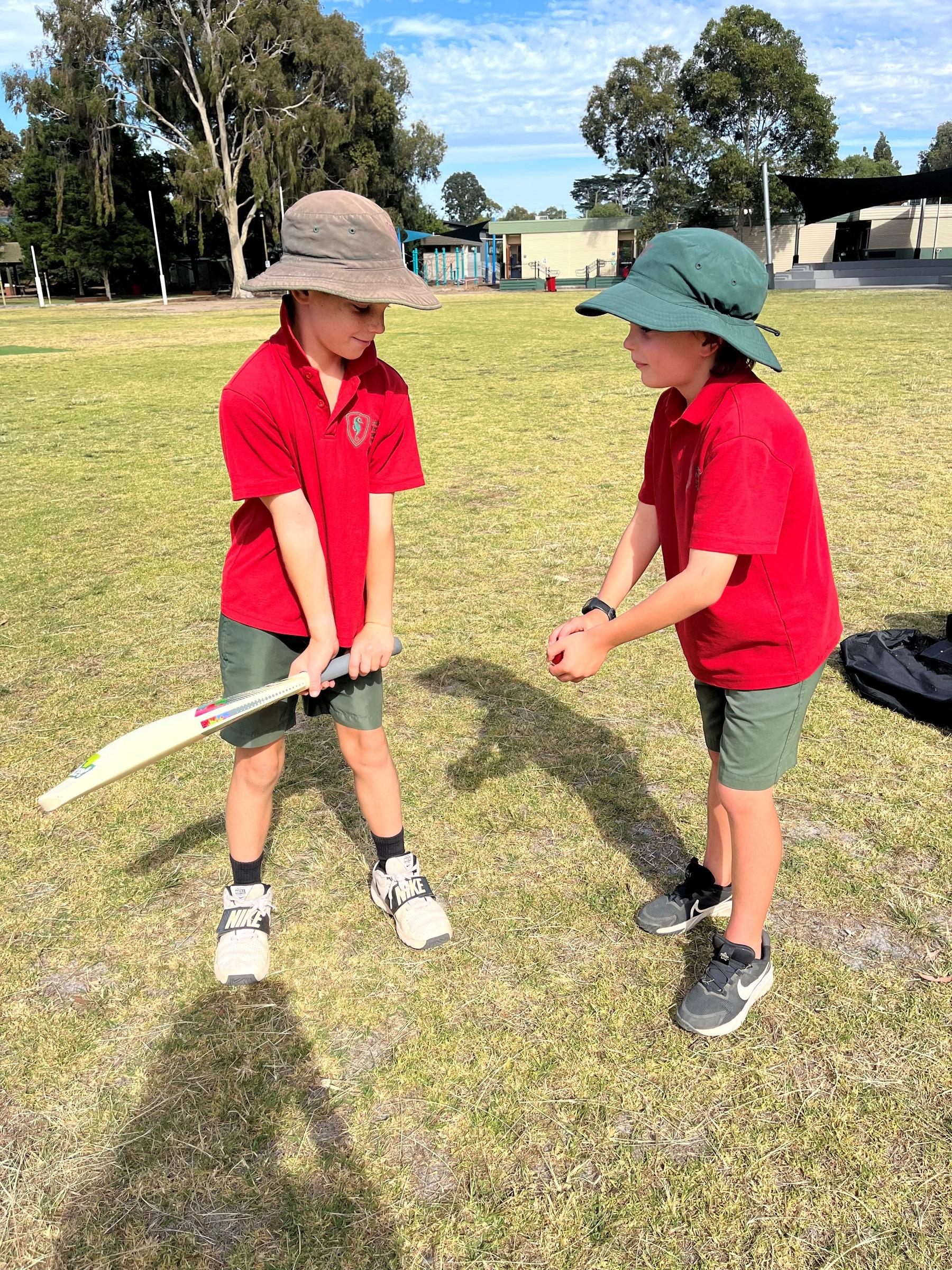Year 3 Specialist News - Term 1

Music
Transdisciplinary theme: How we express ourselves
Central idea: Original musical traditions use rhythm and pitch patterns to show life and relationships
Lines of inquiry:
- Understanding audience and environment
- Reflecting on the impact my communication skills have on others
- Different rhythm patterns are used in dances
- Dances used as a mode of expression.
- Folksongs tell stories
Key Concepts: connection, form, function
Learner Profile Attributes: communicators
Students will:
- Respond to music from First Nations musicians. E.g. Baker Boy
- Compare and contrast bush ballads with modern Australian songs
- Listen to and appreciate a variety of music connected to their Unit of Inquiry e.g. Click Go the Shears, Land Downunder, My Island Home
- Learn Australian Bush dances E.g. The Galopede and Waves of Bondi.
- Create their own bush dance in groups and then perform them
- Add to their knowledge of harmony, as they play chords on chime bars, to a known song.
- Read and write rhythms in group work.
- Take risks at improvising as they play percussion instruments, e.g. lager phones
- Sing songs e.g. The Last Anzac, Shine Your Way
- Discuss how lyrics have had to accommodate the change in social attitudes and experiences
- Reflect on their communication style with each other, as they work together in groups to share ideas
Physical Education
Transdisciplinary theme: Who we are
Central idea: Collaboration through game play and teamwork activities helps positive and strong relationships to form
Lines of inquiry:
- Body awareness- exploring how FMS contribute to an understanding on students' own body and its capabilities
- Team collaboration- how different activities can foster cooperation, teamwork and communication among peers during activity
- Skill development- refining specific motor skills within the curriculum
Key Concepts:
Perspective - Does collaborating strengthen who you are and how you are within a team?
Responsibility:
Children need to be aware of their responsibilities within the class. Acting responsibly during activities with one another, within a team and with equipment at all times, and understanding why this is important for enhancement in learning.
Learner Profile Attributes:
principled, caring, balanced
Students will:
- Team Building Activities- Parachute Games
- Throwing and Catching Strategy Games
- Modified Lacrosse with external coaches and T-Ball Activities
- Refine the Fundamental Motor Skills of Throwing, Catching and Striking previously learnt, and perform these motor skills in various Lacrosse and T-Ball games and activities
- Introduction of basic strategies in team games
Art
Transdisciplinary theme: How we express ourselves
Central idea: Artists interpret and represent the world around them in abstract forms
Lines of inquiry:
- Abstract art through the fundamental elements of shapes, lines, and colours
- Composition and how artists use composition to create balance, harmony, and visual interest
- Artistic influences, studying the works of influential artists and understanding how their techniques, styles and ideas have influenced abstract art till today
Key Concepts: change, perspective and form
Learner Profile Attributes: thinkers and communicators
Students will create:
- Rotating still life drawing- Students move around to draw a display of mechanical objects, detailing the shapes formed with colour. Inspired by the Cubist works of Picasso using observational skills to capture the connection in the still life using line, shape, colour, and tone
- Ceramic relief sculptures- inspired by the works of Jean Arp. Applying the use of ceramic technique, looking at shape, form, balance, and composition
- The design and construction of an Abstract printing plate and the resulting prints. Inspired by the works of Roger Kemp and Leonard French, demonstrating design skills through exploring line, pattern, and balance
Science
Curriculum strand: Earth Science
Central idea: The Earth, Sun and Moon are in constant movement with each other
Lines of inquiry:
- What causes night and day?
- How are shadows are formed and why do they seem to move?
- Science involves testing predictions by gathering data and using evidence to develop explanations of events and phenomena
Learner Profile Attributes: openminded
Students will:
- Investigate what causes night and day
- Investigate how shadows change through-out the day and link these changes to the Sun’s apparent movement across the sky
- Explore the sizes, shapes, positions and movements of the Sun, Earth and Moon
- Through investigations, explain night and day in terms of the earth spinning on it’s axis
